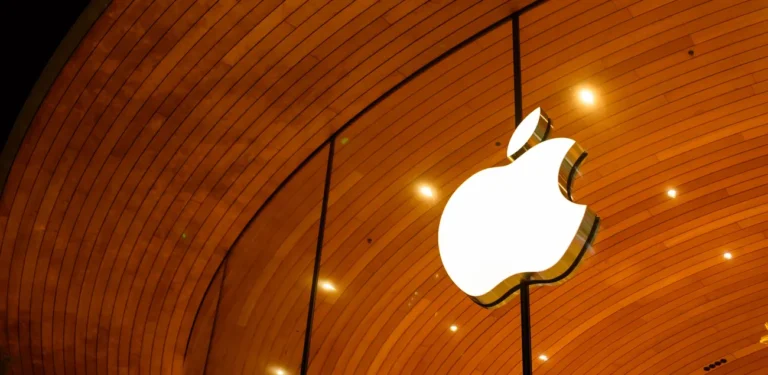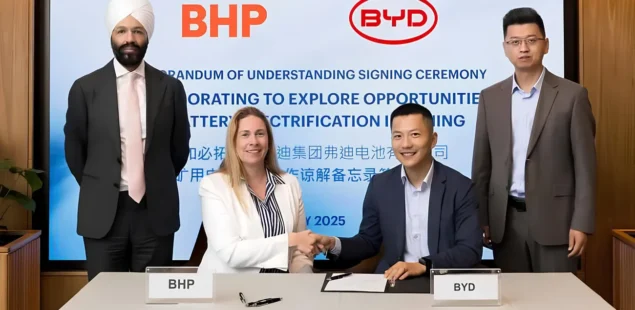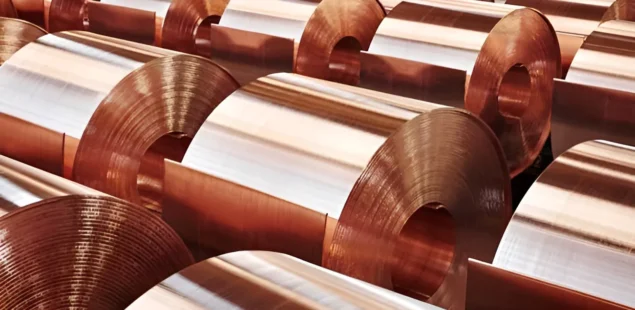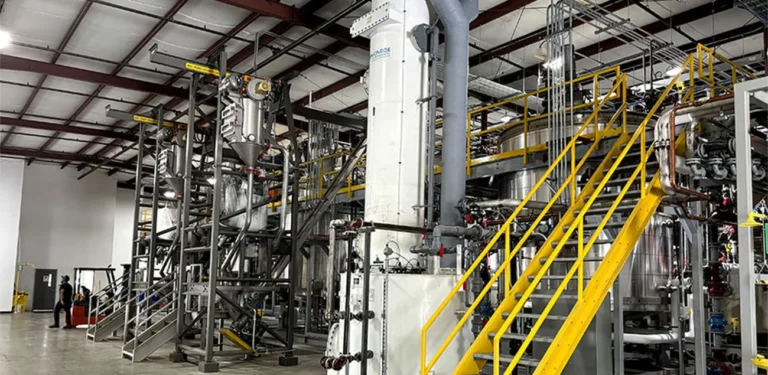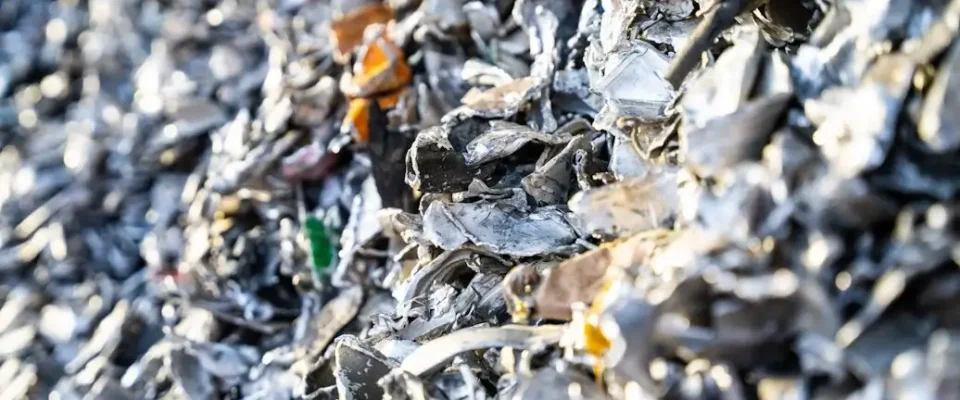
Novelis Tests Hydrogen for Scrap Aluminium Remelting
US metals producer Novelis has conducted a series of tests utilizing hydrogen in a scrap aluminium remelting furnace at its Latchford facility in the UK. The trials demonstrated a 90% reduction in carbon dioxide emissions compared to natural gas use. The process required modifications, including the installation of a new refractory lining, burners, and regenerators.
The experiments involved blending hydrogen with natural gas in proportions ranging from 30% to 100% to evaluate combustion effects on the furnace, safety considerations, and emission levels. Several hundred tonnes of 3xxxx series aluminium alloy were remelted into flat ingots, determining optimal process parameters. These ingots are expected to be processed further at other Novelis plants to refine an "end-to-end" hydrogen-based recycling methodology.
The research is part of the UK government's Industrial Fuel Switching Competition, a £1 billion initiative, with £4.6 million allocated for experiments at Latchford. Novelis' project also aligns with HyNet’s regional decarbonization program, which has been promoting hydrogen applications and carbon capture since 2017.
Other industry leaders are exploring similar initiatives. Norsk Hydro, for instance, produced pilot cylindrical ingots using hydrogen fuel in June 2023. However, wider adoption faces challenges due to hydrogen's flammability, as demonstrated by the February 2025 hydrogen leak at the Nedal plant in the Netherlands, which led to a full evacuation. Despite such risks, hydrogen trials in the aluminium sector are expected to continue.
Codelco and Anglo American to Cooperate on Copper Development
Chilean state-owned Codelco and UK-based Anglo American have signed a memorandum of understanding to establish a joint venture aimed at increasing copper production at the Los Bronces and Andina mines. Together, the two mines contain an estimated 60 million tonnes of copper reserves.
The companies anticipate generating at least $5 billion in net present value over the agreement’s duration, with profits split equally. The joint entity will manage both companies' processing facilities, optimizing operations where necessary.
The initiative aligns with Anglo American’s strategy to achieve 1 million tonnes of copper output by 2030. CEO Duncan Wanblad stated that the partnership could "unlock" 2.7 million tonnes of copper over 21 years from 2030 onward. For Codelco, the collaboration is expected to boost its annual net copper output by approximately 120,000 tonnes.
Finalization of the agreement depends on due diligence assessing the technical conditions of Los Bronces and Andina, regulatory approvals, and environmental permitting. Once these steps are completed, a definitive agreement will outline the governance and operational framework for the joint venture.
Russia Offers Rare Earth Mining Opportunities to US Investors
Russian President Vladimir Putin has proposed that the US invest in Russian rare earth and aluminium mining projects. According to the US Geological Survey, Russia currently produces 2,500 tonnes of rare earth elements annually, a fraction of the 390,000 tonnes mined worldwide—of which China accounts for 270,000 tonnes and the US for 45,000 tonnes.
Despite significant Russian rare earth reserves, only one deposit—Lovozerskoye in Murmansk—is actively developed. Other major reserves, such as Tomtorskoye in Yakutia, remain untapped due to logistical and infrastructure constraints, including extreme climate conditions, lack of transportation, and complex ore compositions requiring costly processing.
American firms could be granted access to unallocated deposits or invited to join the Tomtor development project. For the US, such participation could reduce dependence on Chinese rare earth exports, which are subject to shifting trade policies.
Regarding aluminium, Russia has proposed two development options. One involves bauxite extraction in the Krasnoyarsk region, where the Chadobetskaya group holds 50 million tonnes of reserves. The second proposal involves an integrated energy-metallurgical complex, including bauxite mining, alumina and aluminium refining, and a hydroelectric power facility.
Rusal, Russia’s primary aluminium producer, has implemented similar projects, such as the Boguchansk Energy and Metallurgical Association, which combines an aluminium smelter and hydroelectric power station. The US market is a strategic opportunity for Rusal, given that domestic US primary aluminium production stands at 670,000 tonnes per year while imports total 4.8 million tonnes, including primary and semi-finished products.
Sibanye-Stillwater Exits Rhyolite Ridge Lithium Project
South African miner Sibanye-Stillwater has decided to withdraw from the Rhyolite Ridge lithium and boron project in Nevada, which it had been developing in partnership with Australia’s Ioneer.
Rhyolite Ridge is one of the world's only two known commercial deposits containing high-purity lithium and boron. The site holds 60 million tonnes of reserves, primarily composed of the rare mineral sierlesite, with inferred resources of 146.4 million tonnes.
Ioneer completed a feasibility study in August 2020, outlining plans to produce over 20,000 tonnes of battery-grade lithium and 170,000 tonnes of borates annually. Over its projected 26-year lifespan, the project was expected to provide lithium for more than 50 million electric vehicle batteries.
A year later, Ioneer and Sibanye-Stillwater formed a joint venture, with Sibanye-Stillwater’s participation contingent on a final investment decision. In October 2024, Ioneer submitted detailed technical documentation for review. However, following an evaluation by external consultants, Sibanye-Stillwater’s board opted to withdraw from the project.
The decision appears linked to low global lithium prices, which remain volatile and below sustainable growth levels. This market downturn has forced some lithium producers to operate at reduced margins or incur losses. For example, Albemarle, the world’s largest lithium producer, reported a net profit of just $75 million in Q4 2024.
Zinc Market Weakens Amid Lower Production and Demand
Global zinc ore production is expected to decline by 2.8% in 2024 to approximately 11.9 million tonnes (net metal basis), largely due to reduced output in Canada, China, South Africa, Peru, Ireland, and Portugal. Factors include mine overhauls, declining ore grades, and temporary plant closures. However, production increased in Bolivia, Mexico, and the Democratic Republic of Congo, where Ivanhoe Mines restarted the Kipushi mine in July 2024 after a 31-year hiatus.
Reduced zinc ore availability has constrained global concentrate supply, limiting refined zinc output at smelters in Norway, the Netherlands, South Korea, China, and Japan. Some losses were offset by production increases in France, Germany, and India, according to the International Lead and Zinc Study Group.
The most significant decline was in China, where zinc production dropped 3.4% to 6.6 million tonnes in 2024, accounting for 49% of global supply. Overall, refined zinc output fell 2.6% to 13.5 million tonnes worldwide.
Global zinc consumption edged up by just 0.1% to 13.6 million tonnes. Demand grew in Mexico, Turkey, Vietnam, Brazil, India, and South Korea but weakened in China, the US, and the EU due to stagnation in the construction sector, where zinc-coated steel is widely used.
Despite weak demand, global zinc stocks declined slightly by 31,000 tonnes to 791,000 tonnes in 2024. The average zinc price on the London Metal Exchange rose 5% to $2,779 per tonne. In 2025, moderate consumption growth is anticipated, though economic challenges in major economies may continue to weigh on demand.
